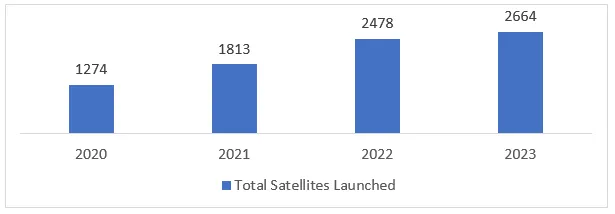- Home
- About Us
- Industry
- Services
- Reading
- Contact Us
Global Space Cryogenic Seen Soaring 7.14% Growth to Reach USD Million by 2032, Projects UnivDatos
Author: Jaikishan Verma, Senior Research Analyst
March 17, 2025
According to a new report by UnivDatos, Space Cryogenic is expected to reach USD Million in 2032 by growing at a CAGR of 7.14%. The growing demand for cryogenics in space missions and space sciences has proven to be conducive to the demand for the space cryogenics market across the globe.
Growing Demand:
One of the major expansion drivers for the space cryogenics market is space exploration and scientific missions across the globe. Cryogenic technology has an important role to play when it comes to traveling outer space as there are many private companies and nations that have exhibited their achievements in the field of space exploration. Cryogenics facilitates system functionalities of a great many applications like the storage of rocket propellants, cooling of scientific instruments, and long-duration space missions.
Some of the missions in which cryogenics plays a significant role are NASA's Artemis return human-to-moon program and other Mars missions by NASA and private agencies such as SpaceX that involve cryogenic systems for propulsion and fuel storage. These missions generally require their fuels to be liquefied at extremely low temperatures, storing them in cryogenics. Moreover, space telescopes like the James Webb Space Telescope should be cryogenically cooled to protect the sensitive instruments they use to observe interstellar objects.
Global Satellite Launch by Year, (2020-2023)

From human missions to Mars and the burgeoning interest in asteroid mining and space colonization, the cryogenic technology needs shall ever be broadened. The more formidable and large-scale the missions get, the more complex and varied actually will be their role in cryogenics. Cryogenics will be an important enabler of scientific research and infrastructure in space.
Applications:
This market space is very critical, as it provides several applications in space exploration along with satellite technology, and modern aerospace systems. Besides, cryogenic technology employing liquefied gases such as liquid oxygen (LOX) and liquid hydrogen (LH2) - is important in rocket propulsion systems because high-density energy fuels can give rockets their required thrust during space missions. The space cryogenic market is crucial, when satellites, cargo, and crewed missions into orbit require launch expenses and forms part of the critical infrastructure to support space exploration.
Not just the desired propulsion effects, cryogenic technology also involves further applications related to spacecraft regarding cryogenic tank storage systems and thermal management systems. It is important to store and transport liquid gases at extremely low temperatures, which provides thermal energy integrity for various onboard systems.
Its application extends to satellite systems for cooling, whereby instruments such as infrared sensors are maintained at operating temperatures by cryogenic coolers. The increasing demand for reusable rockets and the emergence of private space companies have been significant improvement opportunities for the market. Artificial cryogenics in storage, insulation materials, and liquefaction processes have continued to advance with dynamic changes in the space cryogenic market. Current and future space missions have thus formulated a growth context, both as operational and new emerging technologies.
Conclusion:
As far as space cryogenics is concerned, it is the center of any future progress in space research. Future missions that involve going to the moon and manned journeys to Mars and beyond are becoming much more challenging, and hence the growing cryogenic technology to facilitate the safe propulsion, storage, and keeping of sensitive instruments safe will only keep on increasing. Cryogenics serves an important future purpose in launching rockets more efficiently, cooling satellites, and long missions in space. With increasing investments pouring into private sectors and rising possibilities for the reuse of space delivery systems, this market is expected to assume even greater proportions in the coming years. Research and development advancements in cryogenic storage and insulation and liquefaction processes will define the further capabilities of space missions, with the resulting pressure on innovation in the market. These and some other crucial aspects would promulgate the market expansion in developing markets by the year 2024-2032.
Key Offerings of the Report
Market Size, Trends, & Forecast by Revenue | 2024−2032.
Market Dynamics – Leading Trends, Growth Drivers, Restraints, and Investment Opportunities
Market Segmentation – A detailed analysis By Cooling Type, By Application, By Temperature
Competitive Landscape – Top Key Vendors and Other Prominent Vendors
Get a Callback
